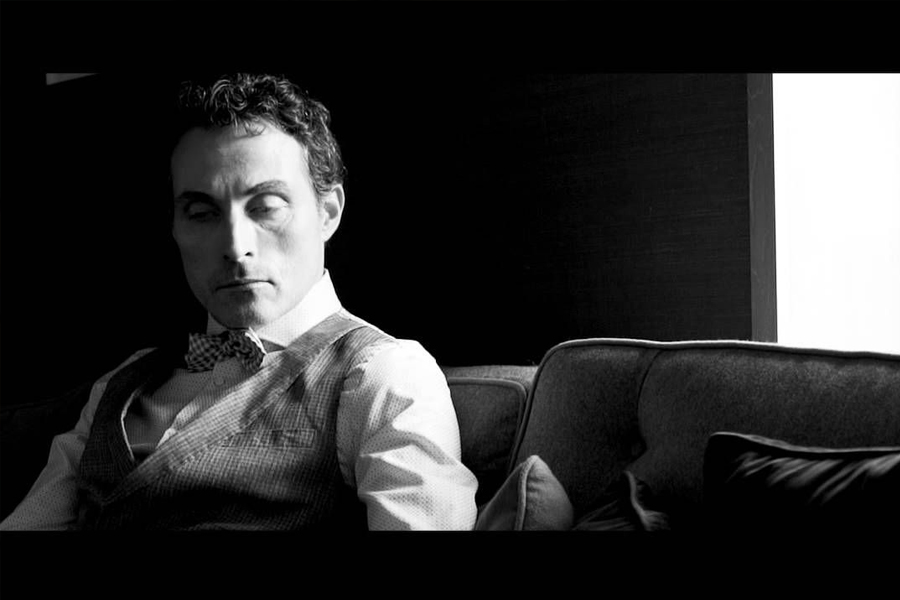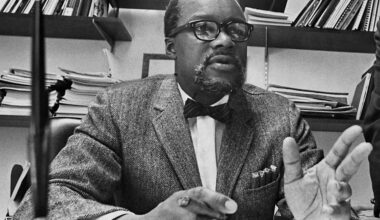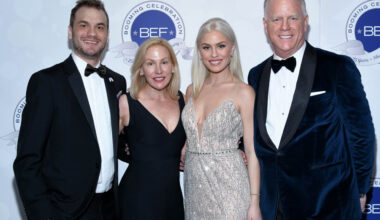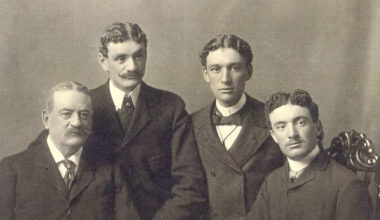Basic Information
| Field | Details |
|---|---|
| Full name | Caspar Sewell |
| Born | c. 1964–1966 (Twickenham, England) |
| Nationality | British |
| Occupations | Journalist, editor, musician (bassist) |
| Instruments | Double bass, bass guitar; backing vocals |
| Genres | Rock, folk |
| Notability | Low public profile; known as the half-brother of actor Rufus Sewell |
| Family (selected) | Mother: Jo Sewell (artist); Half-brother: Rufus Sewell (actor); Father listed in some records: William Sewell (animator); Other relatives occasionally cited: broadcaster Zakia Sewell (relationship not consistently verified) |
| Public footprint | Minimal; mentions are incidental and family-adjacent |
| Residence | United Kingdom (undisclosed/low profile) |
Early Life: A Creative Household and Welsh Resilience
Caspar Sewell’s story begins in Twickenham in the mid-1960s, the elder by roughly three years to his half-brother, Rufus. The family atmosphere was steeped in creativity: a mother with an artist’s eye and a pianist’s ear; a father known in animation circles; a home where ideas were as abundant as sunlight.
Following his parents’ separation, the family moved to Wales, a shift that would color his adolescence with both hardship and resourcefulness. Accounts of those years emphasize practical grit—odd jobs, tight budgets, musical instruments doubling as companions—alongside a close if occasionally combative sibling dynamic. When their father died in 1978, it drew the household closer still. This combination of loss and loyalty formed a quiet spine: a sturdy frame behind Caspar’s later work in the arts, journalism, and music.
Dates in Caspar’s early life appear as silhouettes rather than sharp portraits, yet the outlines are telling—by his teens, music threaded through daily life; by adulthood, he held fast to a mode of living that prized craft over celebrity.
Family: Threads of the Sewell Tapestry
In public, the Sewell family resembles a tapestry viewed from the back—sturdy, interwoven, and deliberately turned away from the spotlight unless the work demands it. Caspar’s relationships are most visible through the prism of his kin, even as he maintains his own distance from public scrutiny.
| Family Member | Relation to Caspar | Key Notes |
|---|---|---|
| Jo Sewell | Mother | Welsh artist and trained pianist; the family’s creative anchor after divorce and relocation. |
| William Sewell | Listed father in some records | Animator of Anglo-Australian background; associated with mid-century British animation; died in 1978. |
| Rufus Sewell (b. 1967) | Half-brother | Award-winning British actor; their relationship is described as close, with the give-and-take of brothers three years apart. |
| “Billy” (William) Sewell | Nephew (Rufus’s son) | Low public profile; represents the next generation of the family. |
| Zakia Sewell | Relative sometimes cited | Broadcaster and writer; relationship descriptors vary across public mentions and are not consistently verified. |
Across interviews and profiles of his more famous half-brother, the family themes recur: improvisation, resourcefulness, a sense of art as work and refuge. Caspar’s life seems cut from the same cloth—even if he prefers to hang it quietly on his own peg.
Career: Journalism and Music Between the Lines
Caspar Sewell’s professional interests—journalism, editing, and music—suggest a craftsman’s temperament. He is frequently described as an editor and journalist who works behind the scenes; the scarcity of bylines implies a preference for shaping rather than showcasing, for trimming the sail rather than steering the ship into headlines. In that way, his editorial career mirrors a bassist’s role in an ensemble: supporting structure, rhythm, clarity.
Musically, he plays double bass and bass guitar, contributing backing vocals and lending weight to rock and folk ensembles. Mentions in niche music circles describe a handful of quiet releases and small-stage collaborations, the kind that thrive in pubs, arts spaces, and limited-run vinyl. If there is a solo path, it winds along modest ridges—steady steps rather than steep ascents. As careers go, it’s an old oak rather than a lightning strike.
A small timeline, drawn from public hints and family context:
| Year/Period | Milestone (approximate) |
|---|---|
| c. 1964–1966 | Born in Twickenham, England |
| Early 1970s | Family relocates to Wales following parental separation |
| 1978 | Father’s death; family’s financial strain and creative resolve deepen |
| 1990s | Active as a bassist in rock/folk ensembles (niche circuits) |
| 2010s | Occasional, low-profile releases and collaborations; freelance editorial work continues |
| 2020s | Maintains privacy; incidents of media mention remain family-adjacent |
Media Presence and Privacy
Caspar’s media trail is faint by design. He rarely, if ever, gives interviews; public appearances are minimal. Most references are incidental, orbiting around profiles of his half-brother or the broader Sewell family. Social media adds little clarity—occasional low-activity accounts are linked to his name but go unverified, and any posts that do surface tend to be fleeting rather than definitive.
In a time that often equates presence with proof, his absence is a statement. The result is a portrait seen in negative space: no controversies, no viral moments, no cascading threads—just the suggestion of a professional life conducted with care and a personal life that declines to explain itself.
Financial Notes: The Value of Staying Off-Grid
There are no reliable net-worth figures for Caspar Sewell. Speculative estimates crop up from time to time, usually pegged low-to-moderate and based on freelance editorial rates and niche music work. The absence of lawsuits, public financial disputes, or notoriety aligns with his overall profile: steady, quiet, and unentangled. In the ledger of modern fame, Caspar’s line reads minimal yet solvent.
The Sewell Contrast: Spotlight and Shadow
If Rufus Sewell is a marquee name, Caspar is the dimmer lamp that makes the marquee legible. One embodies the sharp focus of a camera lens; the other, the seasoned editor trimming the frame. Families often contain these productive opposites: visibility and invisibility, star and stagehand, crescendo and bassline. The Sewell story, read across decades, is that of a creative continuum where each role matters—even when one is chosen to be silent.
FAQ
Is Caspar Sewell related to actor Rufus Sewell?
Yes, they are half-brothers who share a mother and are reported to be close.
What does Caspar Sewell do for a living?
He is known as a journalist and editor, and he also works as a musician, primarily as a bassist in rock and folk settings.
Where was Caspar Sewell born?
He was born in Twickenham, England, in the mid-1960s.
Did Caspar Sewell grow up in Wales?
Yes, after his parents separated, the family relocated to Wales, which shaped his adolescence.
What instruments does he play?
He plays double bass and bass guitar and occasionally provides backing vocals.
Is there a public discography for Caspar Sewell?
Only fragmentary mentions exist; any releases appear to be limited or niche rather than widely distributed.
Does he have social media?
Any accounts linked to his name are low-profile and unverified; he is largely offline.
What is known about his net worth?
There are no credible figures in the public domain, and estimates are speculative.
Is Zakia Sewell related to Caspar?
She is sometimes cited in family contexts, but the exact relationship is not consistently documented publicly.
Who are Caspar Sewell’s parents?
His mother is the Welsh artist Jo Sewell; some records list the animator William Sewell as his father, though accounts of parentage vary.



